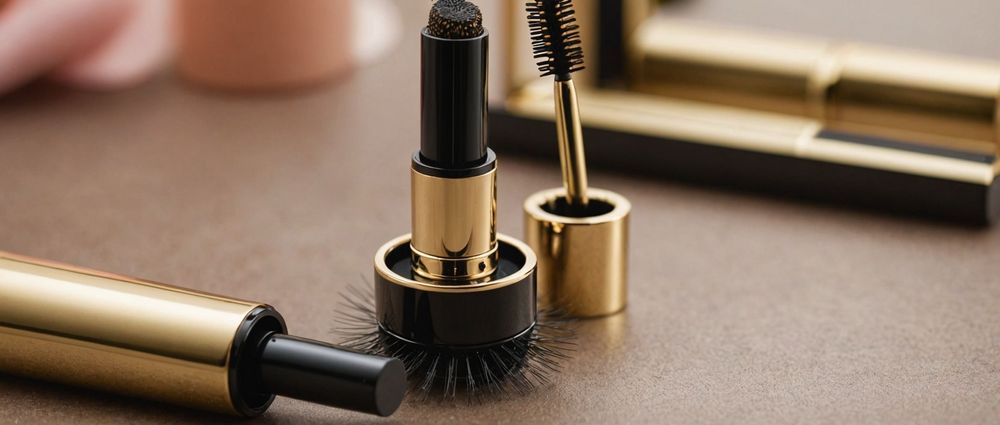Introduction to Foundation Coverage
The foundation, in all its varied forms, functions as the cornerstone of any comprehensive beauty regimen. Its role ranges from subtly improving the skin’s appearance to acting as a concealer for imperfections. Coverage levels vary widely, from sheer to full, each designed for specific cosmetic purposes and skin types. Makeup artists frequently rely on the foundation not only to improve facial aesthetics but also as a preparatory canvas for more intricate makeup tips and techniques, such as hair coloring and vibrant eye makeup.
Light coverage foundations will not mask natural skin entirely but can also be employed to even out skin tone modestly, allowing freckles and natural textures to peek through. In contrast, full coverage foundations offer a solution to those seeking a trend has been evident in the beauty industry of catering to every concealing need, from blemishes to more pronounced skin discolorations.

Diving Deep into Light Coverage Foundations
Characteristics of Light Coverage Foundations
Characteristics of light coverage foundations are as varied as the individuals who use them. This type of foundation is typically infused with ingredients that have nourishing benefits, often featuring hydrating elements that promote a healthy, dewy complexion. Makeup artists praise light coverage foundation for its ability to impart a fresh, radiant look that does not obscure one’s innate beauty. It’s the ideal option when aiming for a makeup aesthetic that says, “I woke up like this,” offering a boost that feels as light as air.
Best Uses for Light Coverage Foundation
Best uses for light coverage foundation are numerous; it suits those days when the skin looks great on its own but could also use a subtle enhancement. It’s a favorite for a quick grocery run, a casual coffee meetup, or even a low-key workday.
- Enhancing Natural Beauty: Apply a thin layer to smooth out minor imperfections, leaving the skin looking healthy and more even in tone.
- Creating a Barely-There Makeup Look: Use it as a base for minimal makeup, topping with a touch of blush, mascara, and tinted lip balm for an effortlessly chic ensemble.
An In-Depth Look at Full Coverage Foundations
Defining Full Coverage Foundations
Defining full coverage foundations can often be synonymous with transformative results. They are engineered to provide an impeccably smooth surface, obscuring imperfections such as acne scars, hyperpigmentation, and more severe discolorations. For those who require or desire a more pronounced makeup look, full coverage foundations are the go-to products that ensure an impeccable finish which makeup artists depend on for high-impact visuals and long-lasting wear.
Situations Best Suited for Full Coverage
Situations best suited for full coverage typically involve events where photography is expected—weddings, galas, and professional photoshoots—or for individuals who wish to address specific skin concerns comprehensively. Full coverage foundation could also prove invaluable for those with skin conditions such as rosacea, offering the confidence that comes with a completely uniform skin tone.

Comparing Light and Full Coverage Foundations
Coverage comparison between light and full coverage foundation is often the deciding factor for many when choosing their ideal product. Light coverage foundation, as the name implies, offers a sheer application that is perfect for those wishing to flaunt their natural beauty with a more casual, softened look. Full coverage foundation, on the other hand, is designed to mask nearly all skin imperfections and deliver a more uniform, sometimes matte finish. It’s important to understand that neither is superior; they simply serve different beauty needs.
| Aspect | Light Coverage Foundation | Full Coverage Foundation |
|---|---|---|
| Appearance | Provides a natural look, allowing some imperfections to show through. | Covers most imperfections, offering a flawless finish. |
| Texture | Lightweight and breathable. | Thicker consistency for better coverage. |
| Application | Can be applied with fingers or a sponge for a sheer finish. | Usually requires a brush or sponge for even application due to its thickness. |
| Longevity | May need reapplication throughout the day, especially in hot weather. | Provides longer-lasting coverage, staying intact for hours. |
| Suitable for | Great for everyday wear, especially for those with clear skin. | Ideal for events, photography, or when maximum coverage is desired. |
The Finish and Formula Differences
The finish and formula differences are another element to consider. Light coverage foundations tend to have a more luminous or satin finish, giving the skin a natural radiance, whilst full coverage foundations may present a variety of finishes from matte to satin, catering to the user’s preference and skin type. The choice between dewy and matte depends also on the longevity required and the skincare concerns of the user.
Choosing Between Light and Full Coverage Based on Skin Type
Choosing between light and full coverage based on skin type can be pivotal in attaining the desired outcome. Oily skin types may lean towards matte full coverage foundations to control shine, whereas dry skin may benefit from the hydrating properties of a light coverage foundation. It is not just about camouflaging or highlighting, but also about caring for the skin underneath.
- Oily Skin: Opt for a matte full coverage foundation to help control excess shine.
- Dry Skin: A hydrating light coverage foundation can enhance the skin’s natural moisture.
Application Techniques for Both Types of Foundations
Best Practices for Applying Light Coverage Foundation
Best practices for applying light coverage foundation include starting with a primed and moisturized face. Using tools like a beauty sponge or fingers can assist in achieving a more skin-like, natural effect. Building up in thin layers can help to address problem areas without over-applying product, which maintains the ‘no makeup’ makeup vibe.
Tips for a Flawless Full Coverage Application
Tips for a flawless full coverage application are equally as crucial. It is advisable to start with a small amount and gradually build up to avoid a cakey appearance. Using a flat-top kabuki brush or a dense sponge can help in achieving an airbrushed look. Setting the foundation with a translucent powder will ensure longevity, especially for those with oily skin or for makeup that has to last through long events.

Conclusion: Making the Right Choice for Your Skin
When choosing between light and full coverage foundation, reflect on your lifestyle, skin type, and the aesthetic you aim to achieve. Both light and full coverage foundations have their place in the beauty world, and quite often, it isn’t about choosing one over the other, but rather recognizing when each is most appropriate. Whether you prefer a natural day-to-day glow or need an impeccable canvas for a special event, picking the right foundation coverage can empower you to feel your best. Remember, makeup is a form of personal expression and should not be bound by strict rules—mix and match to create your perfect blend that makes you feel confident and beautiful.
FAQs on Foundation Coverage
- Can I switch between light and full coverage foundations depending on the occasion? Absolutely! Many people own both light and full coverage foundations for this exact reason. It’s all about using the product that best fits the situation, whether you’re going for a subtle, everyday look or need a more polished, high-impact finish.
- Will full coverage foundation clog my pores? Not necessarily. Many full coverage foundations are formulated to be non-comedogenic. However, it is crucial to ensure that you thoroughly cleanse your skin after wearing heavy makeup to prevent any potential clogging.
- Can light coverage foundation cover redness or acne marks? Light coverage foundation is designed to even out minor skin tone variations and can somewhat conceal slight redness. However, it usually does not cover pronounced acne marks. For such concerns, a full coverage or a targeted concealer might be necessary.
- Is powder foundation considered light or full coverage? Powder foundations come in light to full coverage options. The coverage depends on the formulation and application method; therefore, they can be quite versatile.
- How can I make my full coverage foundation look less heavy or cakey? To avoid a heavy or cakey look, ensure the skin is well-moisturized before application, use only as much product as necessary, and blend thoroughly. Additionally, you can mix a bit of moisturizer with your foundation to sheer it out for a lighter, more natural finish.



